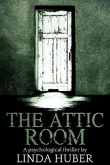
Текст книги "The Forgotten Room"
Автор книги: Lincoln Child
Жанр:
Триллеры
сообщить о нарушении
Текущая страница: 4 (всего у книги 19 страниц)
10
The Grounds and Infrastructure Maintenance Center was a hangarlike outbuilding in the eastern shadow of the mansion, sitting amid a minicampus of other, smaller structures. Although its facade was cleverly designed to imitate that of Dark Gables, its huge sliding doors and flat roof betrayed its true nature.
Jeremy Logan stepped through an employees’ entrance and found himself in a cavernous space. To the far right was a veritable battalion of landscaping and earthmoving equipment: commercial mowers, chippers, Kubota tractors, Ditch Witch trenchers, and half a dozen more esoteric pieces of gear were lined up, gleaming and ready for use. Behind them were two repair bays with a large attached parts section. In the bays, Logan could make out mechanics in jumpsuits performing operations on disassembled machinery. In the middle of the maintenance center were several long, massive industrial shelves, stretching from the concrete floor to the ceiling and containing pallets full of every imaginable item necessary to keep the complex running, from light switches to PVC pipe to circuit boards to plumbing fixtures to office accessories, all carefully labeled. Next came an extensive machine shop. Finally, stretching along the left-hand wall of the maintenance center, was a small cluster of cubicles, staffed with workers typing at workstations or speaking into telephones. Logan walked up to the closest worker and asked directions to the office of Ian Albright. He was pointed toward a set of exposed metal steps set into the nearest wall.
Albright’s office was small but functional. One wall was entirely of glass and looked out over his maintenance domain. Albright himself was middle-aged and roundish, with a drinker’s red nose and a cheery disposition. “Have a seat, then,” he said with a laugh, perching himself on the edge of a desk covered with work orders, invoices, and memos. “Dr. Olafson said to expect you.” Albright spoke in a working-class London accent that Logan found refreshing after the somewhat stifling academic atmosphere inside the main house.
“Thanks,” he said as he sat down. “I have to confess, Mr. Albright—”
“Ian, if you please.”
“I have to confess, Ian, I’m not exactly sure what your job description is. One person referred to you as the ‘infrastructure supervisor.’ Another as the ‘site manager.’ ”
Albright threw back his head and laughed. “That’s a lot of rubbish, that. I’m just a glorified super – with a whacking great council house to look after.” And he indicated the Lux headquarters with a westward wave of his hand and another laugh.
The man’s laughter was infectious and Logan found himself smiling. He was suddenly reluctant to change the mood. “Actually, I’m here to talk to you about a former resident of that particular council house.”
“Oh? And who might that be?”
“Willard Strachey.”
Immediately, the smile fell away from Albright’s face. “Oh,” he said again, in a distinctly subdued tone of voice. “Terrible bit of business.”
“Yes, it was.”
“He was a good one. Not like some, mind you, who treat me and my mates like groundskeepers and won’t give us the time of day. He was always polite, Dr. Strachey was. Always had a kind word.”
“I’ve been asked by the board to look into the circumstances of his death.”
“Right. Terrible bit of business,” Albright repeated, then leaned forward conspiratorially. “How much do you know?”
“About?”
“About his manner of death.”
Logan hesitated. “Just about everything.”
Albright nodded. Then he whispered: “It was me as found his…” He fell silent and pointed to his own head. “Trimming the verge at the time, I was, down near the East Wing, banking the soil and adding some plant food.” He grimaced, reliving the moment. “Been told to keep my mouth shut about it.”
“I think that’s a very good idea. Morale’s low enough as it is.” Logan paused a moment. “Up until recently, how would you characterize Dr. Strachey’s frame of mind?”
“Beg pardon?”
“What was he like? Withdrawn, contemplative, friendly, moody?”
Albright considered this a moment. “Do you know the expression ‘Snug as a bug in a rug’?”
“Of course.”
“Well, that was Dr. Strachey. Don’t think I’ve ever seen a man better fitted for his line of work – or more suited temperamentally, like.”
This jibed so closely with what others had said that Logan decided that in the future he’d stop asking the question. “I’d like to talk to you about the West Wing, if I may.”
Albright looked at him curiously. “The West Wing? What about it?”
“Well, can you tell me its history? Why has it been closed down for so long?” During Logan’s own tenure at Lux, the subject of the West Wing had rarely come up; it was almost as if it had never existed.
“Can’t say as I know for sure. It was in pretty constant use through the sixties and seventies – that’s when I came on staff, in 1978. But by that time the Fellows were starting to complain.”
“Why?”
“Well, it was just getting…down at the heels, like. Offices and labs were small and cramped – not to mention very confusing to get around, what with no central connecting corridor. And when the East Wing renovation was completed in 1976, and everyone saw how much nicer the quarters were over there, they started asking for transfers. The staff was smaller then, and the main structure and the East Wing could accommodate just about everyone. So the West Wing fell into disuse. It was shut up completely in 1984.”
“Why?”
“There just didn’t seem any reason to keep only a handful of blokes working in there. Waste of electricity. Besides, it was overdue for a lot of repair. The heating and plumbing systems were out of date. And so they just closed it up.”
“Until recently,” Logan said.
Albright nodded. “What with the new Fellows and research associates, I guess they needed more room.”
“And they assigned Dr. Strachey to oversee the redesign.”
“Yes. Along with Miss Flood.”
“The architect.” Logan had spent a few hours the night before going over Strachey’s memos, charts, and blueprints for the redesign, and the name Flood Associates had appeared again and again. “And were your men going to take on the actual reconstruction?”
“Oh, no. They’d handle the finishing work, the plumbing and painting and HVAC. But this was to be a big job, a first-class job. You need professional builders for that – and specialists, as well.”
“Specialists?”
“For stonework and the like. Dr. Strachey had some pretty grand designs for the place.”
“But you were involved yourself, I assume?”
“Primarily in terms of arranging the construction schedule with the general contractor.”
“Did Strachey seem to enjoy the work?”
“Funny you should ask that,” Albright said. “I’d have thought he’d have disliked it. Being torn away from his beloved equations and whatnot. And at first he did seem to be on the fence about things. But from what I could see, he grew more and more fascinated with the work. The design work, mind you – he wasn’t interested in knocking down walls or putting up Sheetrock. But the look of the place – now, that was something else. See, the West Wing is sort of like an old luxury liner. There’s beauty under the rust – you just have to know how to look for it. And Dr. Strachey knew how to do that. He had a thing for architecture, he had.”
“Was construction ready to get under way?”
“Under way?” Albright laughed. “The demolition’s been going on for over a month.”
“Did he hire the workmen himself?”
“That he did.”
“I see.” Logan thought for a moment. “It all seems pretty quiet at the moment. I suppose they’ve stopped temporarily because of the tragedy. And of course they’ll need to find someone to take Strachey’s place.”
“Oh, they’ve stopped, right enough. But it’s not because of Dr. Strachey’s death.”
Logan looked at the site manager. “Excuse me?”
“A few days before he died, Dr. Strachey put a stop to the work himself.”
“He did?”
“He did and all. Sent the workers packing.”
“Did he give a reason?”
“Something about problems with structural integrity.”
Logan frowned. “But I thought the West Wing was sound.”
“I’m no engineer. But I’d lay odds that it is.”
A pause. “Could I talk to some of these workers?”
“Doubt you could find them. They were paid off, all scattered to the four winds now.”
“Really? You mean, after all the work of assembling them, they were just dismissed?”
“Yes.”
Odd. “Was Strachey planning to hire a structural engineer to inspect the wing?”
“Can’t say. I’d imagine so.”
Logan thought back to the paperwork he’d gone through the night before. He’d seen nothing referring to this sudden development.
“This general contractor you mentioned. How can I contact him?”
Albright thought a moment. “He worked out of Westerly. Let’s see…Rideout. Bill Rideout. He probably has most of the working files.”
“I’ll get in touch with him.” Logan paused thoughtfully. “Thank you for your time, Mr. Albright,” he said after a moment. “You’ve been most helpful.”
“I’ll see you out.” And – hoisting himself off the edge of his desk – Albright opened the door and led the way down the metal staircase.
11
It was eleven o’clock on his third evening at the think tank when Logan – duffel slung over one shoulder, rolled blueprints and plans and printed schedules under his other arm – walked down the main first-floor corridor of Lux. It was a weeknight, the dining room had closed its doors well over an hour before, and there were no scheduled lectures in the plush-chaired, velvet-bedecked Delaveaux Auditorium that evening. As a result, the associates and Fellows had – true to form – all retired to their various rooms for the night. Save the occasional passing maid or member of the cleaning staff, Logan had Lux’s public areas to himself.
Late that afternoon, he’d made a detailed tour of the East Wing, noting the extensive changes that had resulted from the midseventies renovation. While it retained much of the grandeur of the main massing of Dark Gables, it had clearly been designed to be a more utilitarian space: recessed fluorescent lighting had replaced wall sconces, and – in the offices and labs, at any rate – the gothic moldings and other ornamentation had been largely removed, creating a cleaner, more functional – if less visually interesting – look. Externally similar in shape and size to the West Wing, it had three stories and a single basement, as compared to the main building’s four stories and multiple basement levels.
Based on the plans Logan had looked over, Willard Strachey and his architectural partner had a completely different idea for the remodeling of the West Wing. In its initial realization, the wing had been the most eccentric of Edward Delaveaux’s conceptions. Logan had peered at old black-and-white photographs of the West Wing, taken in the months directly before and after Lux bought the mansion, and he could picture it now in his mind. On stepping in from its grand entrance, the visitor had been confronted with a large, oval, and comparatively stark gallery stretching up unimpeded three stories to the roofline. This was devoted to a series of standing stones – two huge menhirs at one end, surrounded by a henge of liths. Delaveaux had purchased the relics, whole, from a mysterious and very old site on Ambion Hill near Market Bosworth, Leicestershire. The original purpose of the standing stones was unknown – it was thought to have been a site for prehistoric burial ceremonies – and Delaveaux’s purchase and subsequent wholesale removal of the megaliths in 1888 caused a furor in England that, legend went, precipitated the founding of the National Trust. Early on, Delaveaux had enjoyed giving costume parties in this space, whose perimeter he’d furnished with divans, ottomans, and chaise longues. In later years, after the deaths of his wife and son, he had apparently held séances in it. Galleries ran along all four sides of the second and third levels of the open space.
The ring of standing stones took up perhaps the first quarter of the West Wing. Beyond it had lain a confusing welter of spaces: three stories’ worth of galleries, workrooms, art studios, music salons, specialized libraries – literally dozens of interconnected chambers, each designed to indulge one of Delaveaux’s numberless pastimes, hobbies, and avocations. According to rumor, it was the building and fitting out of this strange wing that finally exhausted the onetime millionaire’s funds.
When Lux had taken over Dark Gables, one of the first things they did was to fill in as best they could the second and third floors, retrofitting the – to them – wasted space with offices and laboratories. Their options were limited, however, since the massive liths had been incorporated into the mansion’s foundation. When it came to the labyrinthine series of chambers that lay beyond, Lux had opted for the simplest solution: removing all of Delaveaux’s detritus and simply assigning the empty rooms as work spaces for various Fellows. But this was a stopgap solution: in order to reach one’s office, people would often have to walk through the offices of various other members of the staff and faculty: an inconvenience for all concerned. “Very confusing to get around,” Albright had observed. No wonder people had been eager to find new digs once the East Wing reconstruction was completed.
Willard Strachey’s plan to address the vast welter of rooms was to tear down walls and gut nonstructural elements in order to create two parallel corridors running north to south. Off each corridor, modern offices and labs would be built. The original decorative elements, windows, and wood veneers would be retained and reused wherever possible.
Logan realized that his feet had taken him all the way to the end of the central first-floor corridor. Ahead, two wooden doors blocked his way. Before them was a velvet rope, hanging from brass stanchions and holding a large sign, which contained the symbol of a hard hat and the message CONSTRUCTION AREA. AUTHORIZED PERSONNEL ONLY.
Logan had signed a long series of documents for Dr. Olafson absolving Lux of any obligation or responsibility in the case of personal injury, and he had carte blanche to roam the entire campus. Glancing over his shoulder and finding the wide corridor behind to be empty, he stepped past the velvet rope, pulled a key from his pocket, unlocked the doors, and stepped inside. It was very dark, and the air smelled of sawdust and joint compound. Closing the doors and fumbling in his duffel, Logan pulled out a flashlight, snapped it into life, and swiveled it around. Locating a bank of light switches, he flicked them on, one after another.
He found himself in a small vestibule, apparently a kind of front office for the entrance to the West Wing. The furnishings were all covered with protective drapes, and the wooden floors were hidden beneath multiple layers of drop cloths. They gave the space a strange, anonymous feel. There was only one exit – a large, doorless arch directly to the south – and after finishing his reconnoiter Logan moved through it.
He paused a moment to put down his duffel and page through the working blueprints and reports he had brought with him. Based on the construction schedule, the first job would – naturally enough – be the demo. One team of workmen had been tasked with demolishing the fixtures in preparation for a full-scale rebuilding. A second team of workmen had been given the rather more delicate job of tearing down certain non-load-bearing walls on the second floor to make way for what had been termed in the architectural specs “lateral corridor A” and “lateral corridor B” – the two new hallways off which the redesigned office and lab spaces would be constructed. The rest would follow later.
Stepping into the space beyond the vestibule, Logan found himself in darkness once again, the only light being that which filtered in from the front office. He looked around, found another bank of lights, and turned on the switches. Nothing: clearly, the electricity had been turned off for the purposes of demolition. Switching the flashlight back on, he found he was standing in a seemingly roofless space. There were additional drop cloths on the floor, but here they had been wadded and twisted this way and that by the passage of numerous booted feet, and Logan could see the heavy dust that lay on the floorboards beneath. On all sides, ancient stones rose up around him: Delaveaux’s ceremonial henge. Hemmed in by walls, the liths seemed even larger than they actually were. Logan let his flashlight shine on them, angling its beam up toward the ceiling far above. They were rough-hewn, dark, tapering slightly toward their top edges. What events, good or ill, had they witnessed? Had they seen Richard III die in the nearby battle that marked the fall of the Plantagenets? Or older ceremonies, profane and dark? There was something about these silent sentinels that Logan found unsettling, and he was careful not to touch them as he moved on.
Beyond the standing stones, a corridor led deeper into the wing. Logan moved down it until he reached a staircase, which he ascended. The second floor was a confused jumble of half-destroyed offices. Bare lights dangled from cords. The dust was heavier here, but it was primarily plaster dust, caused no doubt by the wholesale demolition of walls and nonstructural elements to make way for Strachey’s two parallel hallways. Standing where he was, Logan could make out the rough outlines of what must be lateral corridor A. It was visible, not so much from what had been built but from what had been torn away: a long, gaping hole, ripped out of offices and storage rooms and corridors, heading due south into the dark.
With the aid of his flashlight and a compass, Logan consulted the work orders for the construction. The demo work for lateral corridor A was to come first, to be followed later by corridor B.
He moved ahead slowly down the unfinished corridor, swinging the flashlight left and right. He was uncomfortably aware that he was in a construction zone; some of the half-destroyed walls and slanting ceiling beams were clearly less than stable. Not only was he without a hard hat, but he was investigating a space that had just been declared structurally unsound.
He continued south for perhaps twenty yards, peering around with his flashlight, before his way was blocked by two tarps hanging from the ceiling to the floor, one blocking his way ahead and the other to the right. They had been nailed into place, and a hastily scrawled sign was fixed to the closest that read: HAZARDOUS AREA – OFF-LIMITS.
He paused in the dust-heavy darkness, considering. Then, pulling a penknife from his pocket, he cut a small hole in the tarp ahead of him, thrust his light into it, and peered through.
Clearly, this was where the demolition work had stopped. Beyond lay rooms that, though dusty and long abandoned, had not yet been touched. What was it about this spot that had suddenly convinced Strachey the wing was unsound?
Lying on the floor in front of the tarp wall was a small gold mine of equipment: nail guns, sledgehammers, compressors, a portable generator. It was almost as if the workers had dropped their tools and run.
He hesitated a moment. Then, turning, he shone his light over the tarp that blocked his way to the right. Once again, he took a penknife to it, then peered through the tear that resulted. To his surprise, there was no opening or corridor beyond – but instead a bare wall.
This was odd. Logan could understand why Strachey would bar entrance to an area that might be unsafe. But why cover a wall?
Carefully, he pulled the tarp away from the nails that fixed it in place and pinned it back, exposing the wall beyond. It was clearly old, dating back to the original construction of the West Wing. Workmen had removed some of the wallpaper and plaster, exposing the old laths.
In the middle of the wall, at approximately chest level, a ragged circle of plaster, roughly the size of a fist – or the head of a sledgehammer – had been set into the lath, like a plug in a dike. Logan examined it with his flashlight, then scratched at it with his fingernail. It was fresh plaster, only recently set. It could not have been applied more than a few days previously.
Using the tip of his knife, Logan worked away at the edges of the plaster patch, easing it away from the surrounding matrix of lath until it fell out, landing at his feet. Where it had been was now a hole in the wall, black against black.
Bending forward, Logan shone his flashlight at the hole and peered into the cavity beyond. Almost immediately, he went rigid.
“What the hell?” he muttered under his breath.
He snatched the flashlight away, almost as if he’d been burned. Then he stepped back: one step, another.
For a long time he stood, staring at the ragged circle of black. And then – laying his flashlight on the ground so that it illuminated the wall – he pulled a sledgehammer from the pile of equipment. Hefting it, he tapped it gently against the wall a few times. Then, taking a firmer grip on the handle, he struck the sledgehammer against the lath surrounding the hole.
A spiderweb of cracks appeared, and a rain of plaster chips fell to the ground.
Again and again, Logan hammered at the wall, but cautiously, calculatingly, knocking away the old construction, creating a passage just large enough to duck through.
After about ten minutes of work, he’d extended the space from the preexisting hole down to the level of the floor: a black maw about four feet high and two feet wide. He put the sledgehammer down and wiped his hands on his sleeves. He paused a moment in the darkness, listening. He’d been as quiet as he could, but a sledgehammer was not a delicate instrument. Nevertheless, there was no sound of voices, no calls or cries – this far from the occupied areas of Lux, his work had gone unnoticed.
And now he picked up his flashlight, moved toward the opening he’d made, bent low, and then disappeared into the hole.








